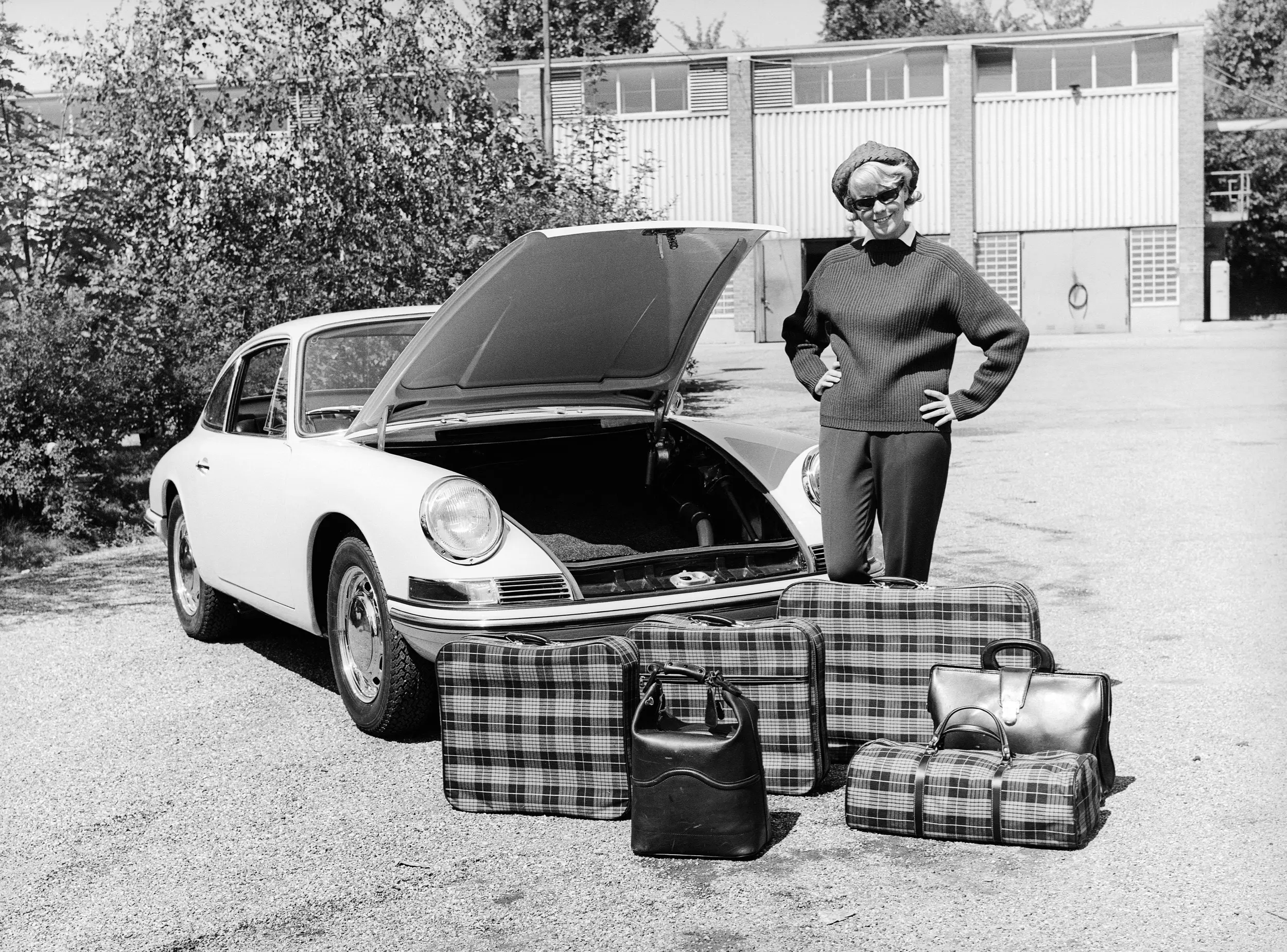THE PORSCHE 911 AT SIXTY
21 February 2023
The year is 1963, and countless visitors are drawn to a new sports car making its bow at the Frankfurt Motor Show. According to the English language sales copy:
With the introduction of the Type 901, the Porsche Company has added another car to round off the upper end of their current grogram of fast and economical automobiles. The new model was designed in the best Of Porsche tradition, combining the virtues of the well proven Type 356 model with ideas and experience gathered by the
technical staff of designers and development engineers over a period of many years.

The Motor reported, “For the enthusiasts, perhaps the most notable car at the Frankfurt Show is the Type 901 Porsche with a six-cylinder 2-litre engine” -
Naturally, the 901 caused an equal sensation at the subsequent Paris Motor Show. However, Peugeot was not terribly happy as the Sochaux firm possessed the legal rights in France to all such number sequences with a central zero. As the French market was important to Porsche, their chief designer Ferdinand Alexander Porsche - the son of Ferry - devised a brilliant solution. The ‘1’ in the badge would be doubled to create ‘911’.
Regardless of the number, the 911 represented a significant departure from the 356, which had dated back to 1948. This was the first Porsche without gear-driven camshafts and rear swing axles, while the transmission was an all-new 5-speed gearbox/final drive unit. In addition, the brakes were Porsche/ATE discs, while the bodywork was a masterpiece of elegant simplicity. Technical Project 7, aka T7, dated from 1959, when Porsche’s management believed the 356 required a successor that would better compete with Ferrari and Jaguar.
Ferry Porsche established a shortlist of vital design criteria - “2-seater with two comfortable jump seats. Rear view mirror integrated in the wings. Easier entry”. As for power, the Carrera 2’s ‘Flat Four’ 2-litre plant was deemed too unrefined for everyday use, and Porsche also rejected fuel injection. The solution was a horizontally opposed 1,991cc six-cylinder SOHC air-cooled unit capable of 130 mph.
Porsche approved the 901’s design on the 16th April 1962, with full 911 production starting in August 1964. Motor Sport compared its introduction to the launch of the Citroën DS19 in France. “Once a manufacturer has a series and basic conception that is respected, it is a big step to make a radical change”. The first English language test is believed to have been in the March 1965 edition of Small Car, the predecessor to Car magazine. The report concluded:
it relates to the current German (and world) economy in both price and refinement at just about the same ratio the first 1100cc coupe did in 1950. I wouldn’t think a decade and a half would be anywhere near the maximum lifespan of a 911. More like the minimum!
Across the Atlantic, the April 1965 edition of Car and Driver stated:
This is the Porsche to end all Porsches – or, rather, start a whole new generation of Porsches. Porsche’s new 911 model is unquestionably the finest Porsche ever built. More than that, it’s one of the best Gran Turismo cars in the world, certainly among the top three or four.
Of course, the early 911 would never be a common sight in the UK. By February 1966, the price was £3,438 1s 3d or the equivalent of five Mini-Coopers. But the great motoring writer Denis Jenkinson described the Porsche “as one of the great cars of today by all standards”. Furthermore, “if you cannot forgive it a few defects then you don’t deserve to be driving it and you should be in a ‘Crootmobile’ or some other family saloon”.
Absolutely.
